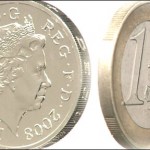Yesterday’s trade saw USD/JPY within the range of 123.71-124.19. The pair closed at 124.16, soaring 0.31% on a daily basis and extending gains from Wednesday. The daily high has also been the highest level since June 24th, when the cross registered a high of 124.38.
At 7:30 GMT today USD/JPY was down 0.14% for the day to trade at 123.97. The pair touched a daily low at 123.92 at 7:18 GMT.
Fundamentals
United States
Consumer Inflation
The annualized consumer inflation in the United States probably remained advanced to 0.1% in June, according to market expectations. In May the annual inflation rate remained flat. In monthly terms, the Consumer Price Index (CPI) probably rose 0.3% in June, following another 0.4% increase in May. If so, this would be the fifth consecutive month, during which consumer prices grew.
In June energy prices plunged 16.3% year-on-year, as prices of gasoline marked the most significant decrease (25.0% year-on-year). Upward pressure came from prices of food, which went up at an annualized rate of 1.6% during the same month, according to the report by the Bureau of Labor Statistics.
The CPI is based on a basket of goods and services bought and used by consumers on a daily basis. In the United States the Bureau of Labor Statistics (BLS) surveys the prices of 80 000 consumer items in order to calculate the index. The latter reflects prices of commonly purchased items by primarily urban households, which represent about 87% of the US population. The Bureau processes price data from 23 000 retail and service businesses.
The CPI includes sales taxes, but excludes income taxes, costs of investments such as stocks and bonds and sales prices of homes.
The annualized core consumer inflation, which is stripped of prices of food and energy, probably rose to 1.8% in June from 1.7% in May. It is usually reported as a seasonally adjusted figure, because consumer patterns are widely fluctuating in dependence on the time of the year. The Core CPI is a key measure, because this is the gauge, which the Federal Reserve Bank takes into account in order to adjust its monetary policy. The Fed uses the core CPI, because prices of food, oil and gas are highly volatile, while the central bank’s tools are slow-acting. In case, for example, prices of gas surge considerably, this could lead to a high rate of inflation, but the central bank will not take action until this increase affects prices of other goods and services.
If the CPI tends to approach the inflation objective, set by the Federal Reserve and considered as providing price stability, or a level below but close to 2%, this will usually bolster the appeal of the US dollar. However, quite high rates of inflation (well above the central bank’s inflation target) can be harmful to economy and as a result, this may lead to the loss of confidence in the local currency.
The Bureau of Labor Statistics is to release the official CPI report at 12:30 GMT.
Housing Starts, Building Permits
The number of housing starts in the United States probably increased to 1.127 million in June from the seasonally adjusted annual rate of 1.036 million during the prior month. Single-family housing starts decreased 5.4% to 680 000 in May, while starts of buildings with five units or more dropped 18.5% to 349 000, according to the report by the US Census Bureau.
Housing Starts represent a gauge to measure residential units, on which construction has already begun, every month. A start in construction is defined as the foundation laying of a building and it encompasses residential housing primarily.
The number of building permits in the country probably decreased to 1.104 million in June from a revised down annual level of 1.250 million in May (1.275 million previously). The latter has been the highest number of permits since September 2007, when a level of 1.261 million was reported. Single-family authorizations rose 2.6% to 683 000 in May, while permits of units in buildings with five units or more went up 26% to 557 000.
Building permits are permits, issued in order to allow excavation. An increase in the number of building permits and housing starts usually occurs a few months after mortgage rates in the country have been reduced. Authorizations are not required in all regions of the United States. Building permits, as an indicator, provide information regarding demand in the US housing market. In case a lower-than-anticipated figure is reported, this will trim demand for the US dollar. The official housing data is due out at 12:30 GMT.
Reuters/Michigan Consumer Sentiment Index – preliminary reading
The monthly survey by Thomson Reuters and the University of Michigan may show that consumer confidence in the United States improved in July. The preliminary reading of the corresponding index, which usually comes out two weeks ahead of the final data, probably rose to 97.0 during the current month from a final reading of 96.1 in June. If so, this would be the highest index reading since January 2015, when a final value of 98.1 was reported. The survey encompasses about 500 respondents throughout the country. The index is comprised by two major components, a gauge of current conditions and a gauge of expectations. The current conditions index is based on the answers to two standard questions, while the index of expectations is based on three standard questions. All five questions have an equal weight in determining the value of the overall index.
The sub-index of current economic conditions increased to a final reading of 108.9 from a preliminary 106.8 in June, after a month ago it stood at 100.8. The sub-index of consumer expectations came in at a reading of 87.8, up from a preliminary value of 86.8 in June and improving from a final reading of 84.2, registered in May.
In case the gauge of consumer sentiment exceeded projections in July, this would boost demand for the greenback. The preliminary reading is due out at 14:00 GMT.
Bond Yield Spread
The yield on Japanese 2-year government bonds went as high as 0.013% on July 16th, after which it slid to 0.010% at the close to lose 0.002 percentage point on a daily basis.
The yield on US 2-year government bonds climbed as high as 0.677% on July 16th, after which it fell to 0.665% at the close to gain 3.2 basis points (0.032 percentage point) for the day.
The spread between 2-year US and 2-year Japanese bond yields, which reflects the flow of funds in a short term, expanded to 0.655% on July 16th from 0.633% during the prior day. The July 16th spread has been the most notable one since July 13th, when the difference was 0.671%.
Meanwhile, the yield on Japans 10-year government bonds soared as high as 0.461% on July 16th, after which it slid to 0.455% at the close to lose 0.006 percentage point compared to July 15th, while marking the first drop in the past three days.
The yield on US 10-year government bonds climbed as high as 2.398% on July 16th, after which it slipped to 2.359% at the close to add 0.003 percentage point on a daily basis, while marking the first increase in the past three days.
The spread between 10-year US and 10-year Japanese bond yields narrowed to 1.904% on July 16th from 1.911% during the prior day. The July 16th yield difference has been the lowest one since July 8th, when the spread was 1.740%.
Pivot Points
According to Binary Tribune’s daily analysis, the central pivot point for the pair is at 124.02. In case USD/JPY manages to breach the first resistance level at 124.33, it will probably continue up to test 124.50. In case the second key resistance is broken, the pair will probably attempt to advance to 124.81.
If USD/JPY manages to breach the first key support at 123.85, it will probably continue to slide and test 123.54. With this second key support broken, the movement to the downside will probably continue to 123.37.
The mid-Pivot levels for today are as follows: M1 – 123.46, M2 – 123.70, M3 – 123.94, M4 – 124.18, M5 – 124.42, M6 – 124.66.
In weekly terms, the central pivot point is at 122.02. The three key resistance levels are as follows: R1 – 123.67, R2 – 124.58, R3 – 126.23. The three key support levels are: S1 – 121.11, S2 – 119.46, S3 – 118.55.





